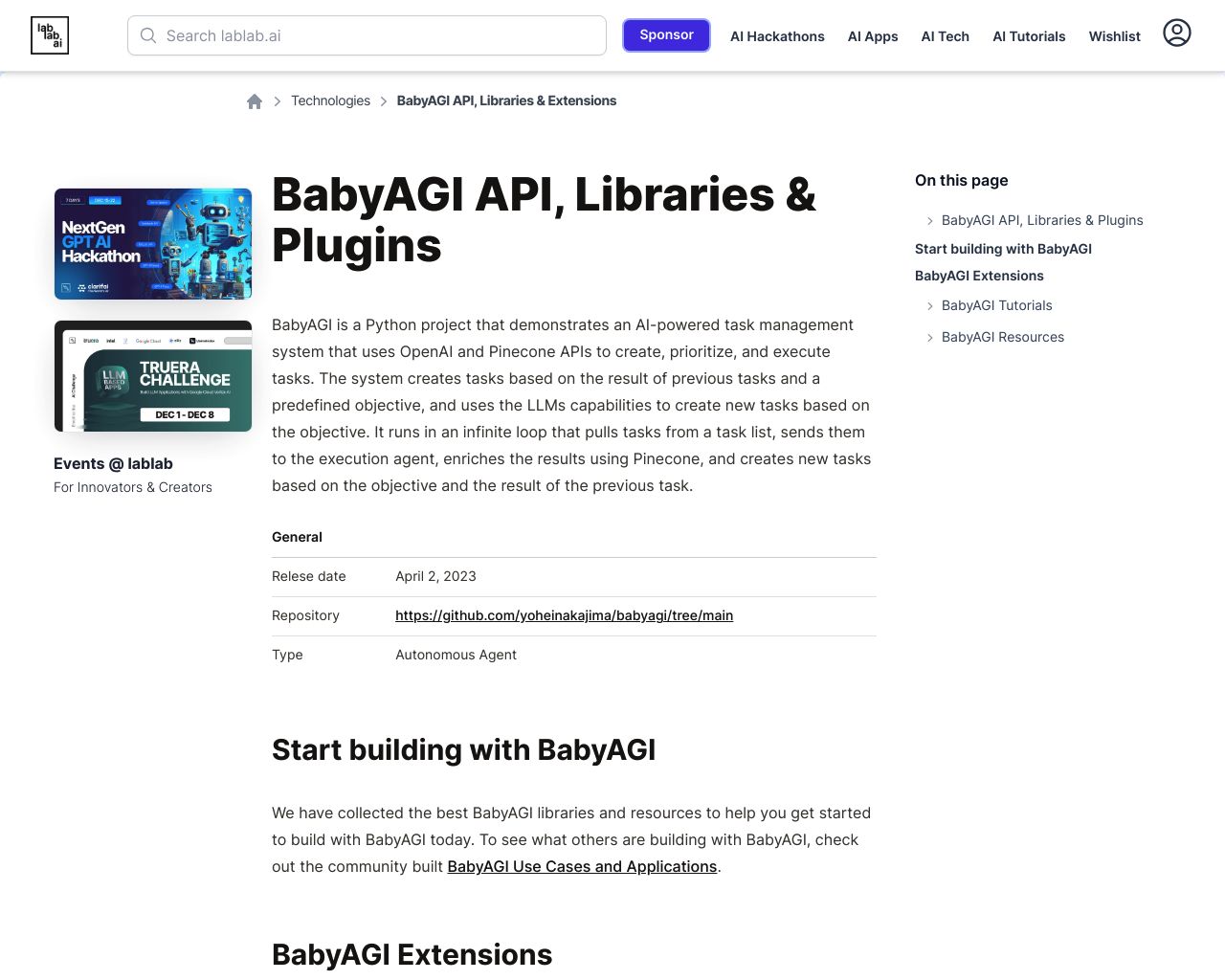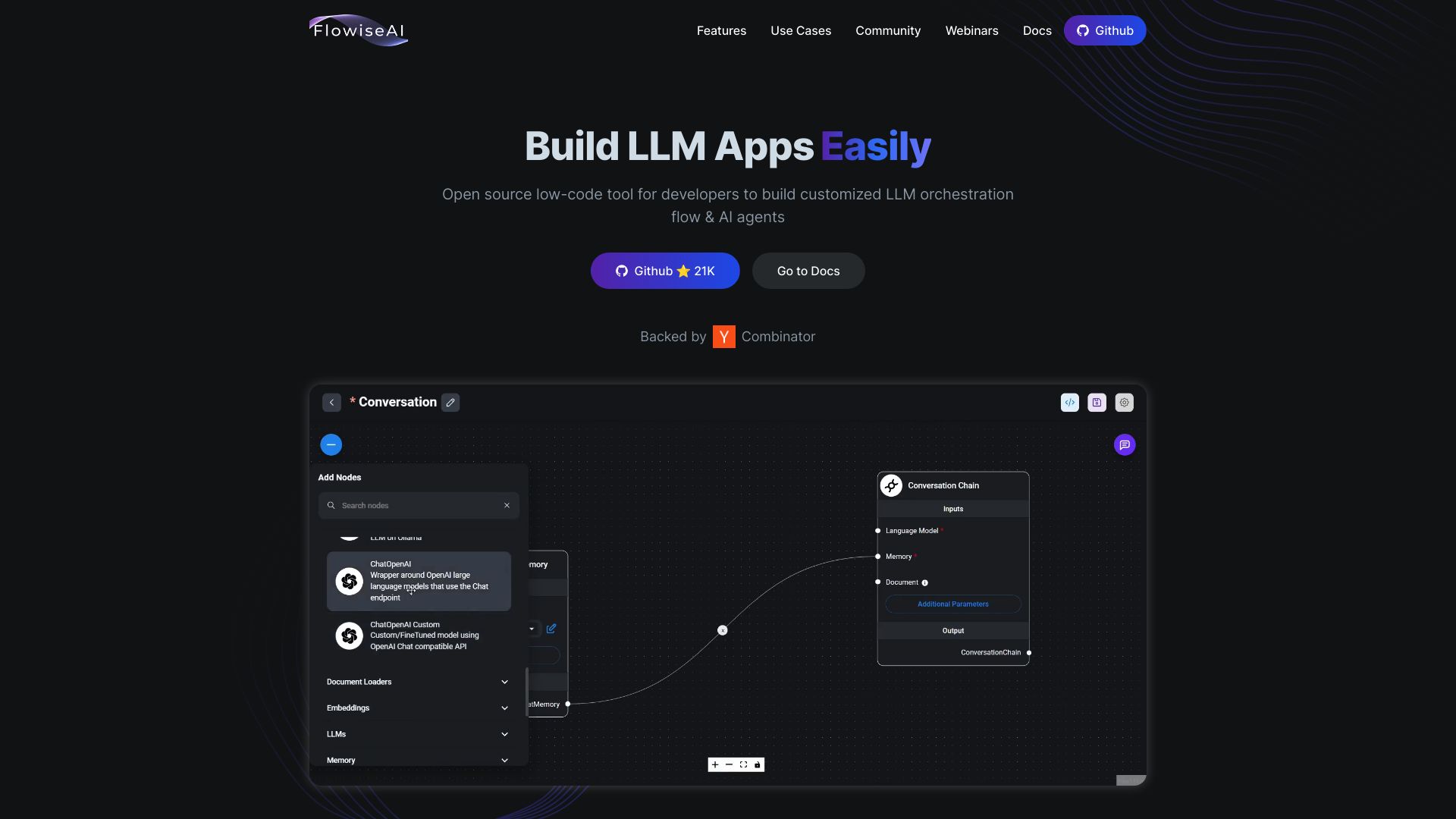BabyAGI vs. FlowiseAI: Comparing AI Development Platforms
AI agent development platforms are reshaping how businesses and developers harness the power of artificial intelligence. BabyAGI vs. FlowiseAI represent two distinct approaches to this challenge, each with unique strengths and limitations. BabyAGI focuses on autonomous task management, breaking complex problems into manageable subtasks through advanced natural language processing.
FlowiseAI, on the other hand, offers a low-code visual interface for creating LLM workflows, making AI development more accessible to a broader audience. This comparison explores the capabilities, limitations, and potential applications of both platforms, while also introducing SmythOS as a comprehensive alternative that addresses the shortcomings of both BabyAGI and FlowiseAI. By examining these tools, readers will gain insights into the current state of AI agent development and the innovative solutions shaping the future of artificial intelligence in various industries.
BabyAGI Overview
BabyAGI revolutionizes task management through autonomous AI agents. This open-source project simulates human-like cognitive processes, generating and prioritizing tasks based on predefined objectives. BabyAGI continuously learns from previous results, adapting its approach to optimize performance.


BabyAGI excels in breaking down complex problems into manageable subtasks. Its advanced natural language processing capabilities, powered by OpenAI’s models, enable sophisticated task analysis and execution. The system leverages Pinecone, a vector database, to store and retrieve task results efficiently, maintaining context across multiple operations.
BabyAGI excels in breaking down complex problems into manageable subtasks. Its advanced natural language processing capabilities… enable sophisticated task analysis and execution.
Developers and AI enthusiasts benefit from BabyAGI’s flexibility in handling diverse tasks. From data analysis to creative writing, the system adapts to various domains. However, BabyAGI requires coding knowledge, particularly in Python, limiting accessibility for non-technical users.
While BabyAGI showcases impressive autonomous capabilities, it lacks some features found in more comprehensive platforms. There’s no visual builder or no-code editor, and the system doesn’t offer built-in explainability tools or debug modes. Additionally, BabyAGI operates as a single agent, without native support for multi-agent collaboration or scheduled operations.
Despite these limitations, BabyAGI’s innovative approach to task management and problem-solving positions it as a valuable tool for exploring the frontiers of artificial general intelligence. Its ability to learn and adapt autonomously offers a glimpse into the future of AI-driven productivity enhancements across various industries.
FlowiseAI Overview
FlowiseAI empowers developers to create customized large language model (LLM) workflows and AI agents through an open-source, low-code platform. This tool simplifies the process of building sophisticated AI applications without requiring deep expertise in artificial intelligence.


FlowiseAI’s visual interface allows rapid prototyping and deployment of AI solutions. Users can drag and drop various components to design complex workflows tailored to specific needs, whether for document analysis, customer support, or other applications. The platform supports integration with document loaders, vector databases like Pinecone, and various data types including PDFs, web pages, and CSV files.
FlowiseAI’s visual interface allows rapid prototyping and deployment of AI solutions. Users can drag and drop various components to design complex workflows tailored to specific needs…
At the core of FlowiseAI is its agent and chain system. Developers link different nodes such as document loaders, text splitters, and LLMs to create intricate AI processes. This modular approach simplifies the management of AI workflows, making it accessible to a broader audience of developers and businesses.
While FlowiseAI offers powerful capabilities for AI development, it lacks some features found in more comprehensive platforms. It does not provide hosted agents for development or production environments, limiting deployment options. Additionally, the platform does not include built-in debugging tools or support for multimodal interactions, which may restrict its use in more complex AI scenarios.
Despite these limitations, FlowiseAI’s open-source nature and focus on lowering the barrier to entry for AI development make it a valuable tool for organizations looking to implement AI solutions quickly and efficiently. Its emphasis on customization and integration capabilities positions it as a versatile option for developers seeking to harness the power of large language models in their applications.
Feature Comparison
BabyAGI and FlowiseAI take different approaches to AI agent development, each with distinct strengths and limitations. BabyAGI excels in autonomous task generation and execution, leveraging advanced natural language processing to break down complex objectives into manageable subtasks. Its integration with Pinecone for vector storage enables efficient retrieval of past results, enhancing its problem-solving capabilities. However, BabyAGI lacks a visual interface, requiring users to have Python coding skills.
FlowiseAI, in contrast, offers a low-code visual builder that simplifies AI workflow creation. Its drag-and-drop interface allows rapid prototyping of LLM-based applications, making it accessible to users with varying technical expertise. FlowiseAI supports integration with multiple data sources and APIs, enabling versatile AI agent development. Unlike BabyAGI, FlowiseAI provides a more user-friendly approach to building AI workflows, though it may not match BabyAGI’s depth in autonomous task management.
Both platforms have notable gaps in core components and security features. Neither offers hosted agents for development and production, multi-agent collaboration, or robust debugging tools. Additionally, they lack built-in features for data encryption, OAuth integration, and IP control, which may limit their suitability for enterprise-level deployments requiring stringent security measures.
Feature Comparison Table
| BabyAGI | FlowiseAI | SmythOS | |
|---|---|---|---|
| CORE FEATURES | |||
| Hosted Agents (Dev, Production) | ❌ | ❌ | ✅ |
| Environments (Dev, Production) | ❌ | ❌ | ✅ |
| Visual Builder | ❌ | ✅ | ✅ |
| No-Code Options | ❌ | ✅ | ✅ |
| Explainability & Transparency | ❌ | ✅ | ✅ |
| Debug Tools | ✅ | ❌ | ✅ |
| Multi-Agent Collaboration | ✅ | ❌ | ✅ |
| Human-AI Interaction | ❌ | ✅ | ✅ |
| Audit Logs for Analytics | ❌ | ❌ | ✅ |
| Work as Team | ✅ | ❌ | ✅ |
| Agent Work Scheduler | ❌ | ✅ | ✅ |
| Logs & Monitoring | ❌ | ✅ | ✅ |
| SECURITY | |||
| Constrained Alignment | ❌ | ❌ | ✅ |
| OAuth | ✅ | ❌ | ✅ |
| IP Control | ❌ | ❌ | ✅ |
| COMPONENTS | |||
| Foundation AIs | ❌ | ✅ | ✅ |
| Zapier APIs | ✅ | ❌ | ✅ |
| Classifiers | ✅ | ❌ | ✅ |
| Data Lakes | ❌ | ❌ | ✅ |
| DEPLOYMENT OPTIONS (EMBODIMENTS) | |||
| Staging Domains | ❌ | ❌ | ✅ |
| Production Domains | ❌ | ❌ | ✅ |
| Deploy as Scheduled Agent | ❌ | ❌ | ✅ |
| DATA LAKE SUPPORT | |||
| Hosted Vector Database | ✅ | ❌ | ✅ |
| Sitemap Crawler | ❌ | ❌ | ✅ |
| YouTube Transcript Crawler | ❌ | ❌ | ✅ |
| Word File Support | ✅ | ❌ | ✅ |
Best Alternative to BabyAGI and FlowiseAI
SmythOS stands out as the superior alternative to BabyAGI and FlowiseAI for AI agent development and deployment. Our platform combines the strengths of both competitors while addressing their limitations, offering a comprehensive solution for businesses and developers alike.
We provide a powerful visual builder that simplifies the creation of complex AI workflows, rivaling FlowiseAI’s low-code approach. Unlike BabyAGI, which requires Python programming skills, our drag-and-drop interface enables rapid prototyping and deployment of AI agents without extensive coding knowledge.
SmythOS stands out as the superior alternative to BabyAGI and FlowiseAI for AI agent development and deployment.
SmythOS excels in offering hosted agents for both development and production environments, a critical feature missing from both BabyAGI and FlowiseAI. This capability streamlines the development process and ensures seamless transitions from testing to live deployment. Our platform also supports multi-agent collaboration, allowing teams of AI agents to work together on complex tasks, surpassing the capabilities of FlowiseAI in this regard.
Security and scalability set SmythOS apart from the competition. We implement robust data encryption, OAuth integration, and IP control features, addressing the enterprise-level security concerns that BabyAGI and FlowiseAI overlook. Our platform’s scalability ensures that AI solutions can grow with your business needs, supporting everything from small-scale prototypes to large-scale, production-ready deployments.
With SmythOS, users gain access to an unparalleled range of integrations and deployment options. We support various AI models, APIs, and data sources, offering flexibility that goes beyond what BabyAGI and FlowiseAI provide. Whether you’re looking to deploy AI agents as APIs, chatbots, or scheduled tasks, our platform offers the versatility to meet diverse use cases across industries.
Conclusion
BabyAGI and FlowiseAI offer innovative approaches to AI development, each with unique strengths. BabyAGI excels in autonomous task management, breaking complex problems into manageable subtasks. FlowiseAI provides a user-friendly visual interface for creating LLM workflows. Both platforms demonstrate the potential of AI in enhancing productivity across various industries.
However, SmythOS emerges as the superior choice, offering a comprehensive solution that addresses the limitations of both BabyAGI and FlowiseAI. SmythOS combines the autonomous capabilities of BabyAGI with the visual simplicity of FlowiseAI, while adding crucial features like hosted agents, multi-agent collaboration, and robust security measures. Our platform’s extensive integration ecosystem, supporting over 300,000 connections, enables seamless workflow orchestration across various tools and services.
SmythOS stands out with its “Create Once, Deploy Anywhere” philosophy, allowing users to build AI agents that can be easily integrated into multiple environments. From chatbots to APIs, SmythOS agents can be deployed across popular platforms, maximizing their potential impact. This versatility, combined with our platform’s scalability and enterprise-ready features, makes SmythOS the ideal choice for businesses looking to harness the full power of AI.
To experience the future of AI automation and see how SmythOS can transform your workflow, create a free SmythOS account today. With unlimited agents and a 30-day money-back guarantee, you can explore our platform risk-free and discover how SmythOS can revolutionize your approach to AI development and deployment.
Last updated:
Disclaimer: The information presented in this article is for general informational purposes only and is provided as is. While we strive to keep the content up-to-date and accurate, we make no representations or warranties of any kind, express or implied, about the completeness, accuracy, reliability, suitability, or availability of the information contained in this article.
Any reliance you place on such information is strictly at your own risk. We reserve the right to make additions, deletions, or modifications to the contents of this article at any time without prior notice.
In no event will we be liable for any loss or damage including without limitation, indirect or consequential loss or damage, or any loss or damage whatsoever arising from loss of data, profits, or any other loss not specified herein arising out of, or in connection with, the use of this article.
Despite our best efforts, this article may contain oversights, errors, or omissions. If you notice any inaccuracies or have concerns about the content, please report them through our content feedback form. Your input helps us maintain the quality and reliability of our information.
